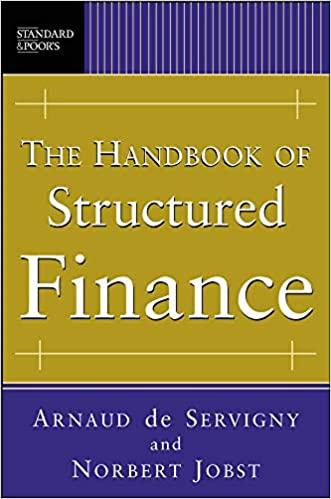Question
Integrated Waveguide Technologies (IWT) is a 6-year-old company founded by Hunt Jackson and David Smithfield to exploit metamaterial plasmonic technology to develop and manufacture miniature
Integrated Waveguide Technologies (IWT) is a 6-year-old company founded by Hunt Jackson and David Smithfield to exploit metamaterial plasmonic technology to develop and manufacture miniature microwave frequency directional transmitters and receivers for use in mobile Internet and communications applications. IWTs technology, although highly advanced, is relatively inexpensive to implement, and its patented manufacturing techniques require little capital as compared to many electronics fabrication ventures. Because of the low capital requirement, Jackson and Smithfield have been able to avoid issuing new stock and thus own all of the shares. Because of the explosion in demand for its mobile Internet applications, IWT must now access outside equity capital to fund its growth, and Jackson and Smithfield have decided to take the company public. Until now, Jackson and Smithfield have paid themselves reasonable salaries but routinely reinvested all after-tax earnings in the firm, so dividend policy has not been an issue. However, before talking with potential outside investors, they must decide on a dividend policy.
Your new boss at the consulting firm Flick and Associates, which has been retained to help IWT prepare for its public offering, has asked you to make a presentation to Jackson and Smithfield in which you review the theory of dividend policy and discuss the following issues.
a.
(1) What is meant by the term distribution policy? How has the mix of dividend payouts and stock repurchases changed over time? (2) The terms irrelevance, dividend preference (or bird-in-the-hand), and tax effect have been used to describe three major theories regarding the way dividend payouts affect a firms value. Explain these terms, and briefly describe each theory. (3) What do the three theories indicate regarding the actions management should take with respect to dividend payouts? (4) What results have empirical studies of the dividend theories produced? How does all this affect what we can tell managers about dividend payouts?
b.
(1) Assume that IWT has completed its IPO and has a $112.5 million capital bud-get planned for the coming year. You have determined that its present capital structure (80% equity and 20% debt) is optimal, and its net income is forecasted at $140 million. Use the residual distribution approach to determine IWTs total dollar distribution. Assume for now that the distribution is in the form of a dividend. Suppose IWT has 100 million shares of stock outstanding. What is the forecasted dividend payout ratio? What is the forecasted dividend per share? What would happen to the payout ratio and DPS if net income were forecasted to decrease to $90 million? To increase to $160 million? (2) In general terms, how would a change in investment opportunities affect the payout ratio under the residual distribution policy? (3) What are the advantages and disadvantages of the residual policy? (Hint: Dont neglect signaling and clientele effects.)
c.
(1) Describe the procedures a company follows when it makes a distribution through dividend payments. (2) What is a stock repurchase? Describe the procedures a company follows when it makes a distribution through a stock repurchase.
d. Discuss the advantages and disadvantages of a firm repurchasing its own shares.
e. Describe the series of steps that most firms take when setting dividend policy.
f. What are stock splits and stock dividends? What are the advantages and disadvantages of each?
g. What is a dividend reinvestment plan (DRIP), and how does it work
Step by Step Solution
There are 3 Steps involved in it
Step: 1

Get Instant Access to Expert-Tailored Solutions
See step-by-step solutions with expert insights and AI powered tools for academic success
Step: 2

Step: 3

Ace Your Homework with AI
Get the answers you need in no time with our AI-driven, step-by-step assistance
Get Started


